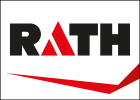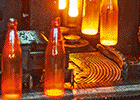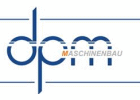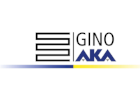Green River Basin, Wyoming, United States--The Green River Basin of southwestern Wyoming contains a large trona resource of over 127 billion tons, and more than 40 billion tons are reserves (economically min-able with current technology); at the current rate of production, Wyoming’s trona reserves should last well over 2,000 years, thus setting the world record for being the World’s Largest Trona Deposit, according to the WORLD RECORD ACADEMY.
"The Green River Basin of southwestern Wyoming contains the largest trona resource in the world at over 127 billion tons, of which more than 40 billion tons are reserves (economically min-able with current technology). At the current rate of production
and assuming a moderate growth in that rate of 1 to 2 percent, Wyoming’s trona reserves should last well over 2,000 years," the Wyoming State Geological Survey says.
"In 2013, Wyoming produced 16 million tons of trona. World production amounted to 14 million tons and came from Botswana, Kenya, Mexico, Turkey, Uganda, and a few other countries. More than 39 million tons of synthetic soda ash were also produced in 2013, primarily in China and India.
"Trona mining became the leading natural source of soda ash in 1974. Previously, most soda ash was produced syntheti-cally, which still occurs in countries such as China and India. In Wyoming, natural soda ash has replaced what was known as the
Solvay process, a synthetic process using salt brine and limestone for sodium carbonate or soda ash production.
"Wyoming produces natural soda ash from four trona mining and processing operations (all located in Sweetwater County):
FMC Minerals, OCI Chemical Corp., Tata Chemicals, and Sol-vay Chemicals Inc."
"In a world-first, methane emissions from trona mining activities were captured by a satellite operated by GHGSat, a Canadian company that specializes in high-resolution greenhouse gas monitoring from space. The satellite imagery shows emissions from the Green River Basin in Wyoming — the location of the largest natural deposit of trona from which 18.1 million tonnes of the mineral were extracted in 2019 and which supplies around 90% of the soda ash used in the United States," the Mining.com says.
"Trona is a sodium carbonate compound extracted from underground mines and processed into soda ash. It is mostly used to manufacture glass for the automotive and construction industries and it is also the raw material for baking soda, laundry, and cleaning products used in the manufacture of cloth and paper. When trona ore is extracted from underground mines, the fracturing of the rock releases methane, which must be vented for safety reasons. While soda ash can be manufactured synthetically, about 35% of the world’s supply comes from natural sources.
"Zooming into the Green River Basin, GHGSat’s satellite detected and measured methane emissions with an estimated rate of nearly 950kg/h. Whilst smaller than the average emission rate from coal mines observed over the last six months, if captured and processed into natural gas, the emission level measured could supply electricity for a year to approximately 1 million homes."
"Trona is a sodium carbonate compound that is processed into soda ash or bicarbonate of soda, or baking soda, as it is commonly known. Wyoming has the world’s largest deposit of trona, supplying about 90% of the nation’s soda ash. This mineral is Wyoming’s top export and is shipped to markets around the globe. Wyoming mines produced over 17.4 million tons of trona and employed 2,225 people in 2018," the Wyoming Mining Association says.
"The U.S. Geological Survey in 1997 estimated the total reserve of trona to be 127 billion tons, but only 40 billion tons are recoverable. At the current rate of operation, Wyoming’s reserves of trona will last 2,350 years. According to the Wyoming Geological Survey, Wyoming mines have produced over 633.2 million tons of trona since 1949.
"Glass making consumes about half of the soda ash, followed by the chemical industry, which uses about a quarter of the output. Other uses include soap, paper manufacturing, and water treatment, and all baking soda comes from soda ash, which means you probably have a box of Wyoming trona product in your kitchen."
"With the largest reserves of naturally-occurring trona on earth, the Green River area of Sweetwater County, Wyoming is indisputably the "trona capital of the world", the ANSAC.com says.
"The Green River Basin is currently estimated to contain 134 billion tons of mineable trona ore, extending over a 1,000 square mile area, at depths of up to a third of a mile. Taking into account market growth trends, this is enough to supply the world with soda ash for the next several hundred years.
"Soda ash has been used in manufacturing for over 5,000 years. Ancient Egyptians recovered the product from dry lake-bed deposits or manufactured it by burning seaweed and other marine plants. This product was used to make glass ornaments and vessels. The Romans also used soda ash for baking bread, making glass, and for medicinal purposes."
"For the first time, satellite observations of methane emissions from the largest trona deposit in the world were captured by a GHGSat commercial satellite. The GHGSat captured the emissions from the trona mining area near Green River, WY, the largest natural trona deposit in the world," the Mining Engineering Magazine says.
"Trona mining operations produce large quantities of methane emissions through fracturing of the rock to extract the ore that releases methane, which must be vented from the mine for safety reasons. While soda ash can be manufactured synthetically, about 35 percent of the world’s supply comes from natural sources.
"GHGSat satellite technology detected and measured the methane emission with an estimated rate of nearly 950kg/h. While smaller than the average emission rate from coal mines observed by GHGSat satellites over the last six months, at a continuous rate if captured and processed into natural gas, the emission level measured could supply electricity for a year to approximately 37,000 homes. The volume of methane measured presents a potential opportunity for mining operators in setting up an investment structure, by converting methane emissions into renewable energy."
"The total value of domestic natural soda ash (sodium carbonate) produced in 2021 was estimated to be about $1.8 billion1, and the quantity produced was 12 million tons, about 20% more than that of the previous year," the United States Geological Survey says.
"The U.S. soda ash industry comprised four companies in Wyoming operating five plants and one company in California operating one plant. The five producing companies have a combined annual nameplate capacity of 13.9 million tons (15.3 million short tons).
"Borax, salt, and sodium sulfate were produced as coproducts of sodium carbonate production in California. Chemical caustic soda, sodium bicarbonate, and sodium sulfite were manufactured as coproducts at several of the Wyoming soda ash plants. Sodium bicarbonate was produced at an operation in Colorado using soda ash feedstock shipped from the company’s Wyoming facility.
"Relatively low production costs and lower environmental impacts provide natural soda ash producers some advantage over producers of synthetic soda ash. The production of synthetic soda ash normally consumes more energy and releases more carbon dioxide than that of natural soda ash. In recent years, U.S. producers of natural soda ash were able to expand their markets when several synthetic soda ash plants were closed or idled in other parts of the world."
"Wyoming's diverse mineral deposits and unique geology provide raw materials for industry, energy development and other sectors. The exploration, development and production of some of Earth's most basic natural resources creates quality employment opportunities in local communities, and federal mineral development is a major source of revenue that supports local, state and federal priorities," the Bureau Of land Management says.
"Wyoming is home to the world's largest trona deposit, which covers about 1,300 square miles near Green River. This region supplies about 90% of the nation's soda ash, Wyoming's biggest export and third-largest developed mineral resource, producing about 17 million to 18 million tons annually.
"Manufacturers use soda ash as an intermediate to produce products that sweeten soft drinks, relieve physical discomfort, improve food and toiletries, and more. Over the last five years, one trona operator received a BLM sustainability award for its efforts to reestablish sage-grouse habitat."
"One of several products derived from sodium minerals mined on public lands, soda ash is used in many common products, including glass, pulp paper, detergents, and baking soda. Soda ash may either be manufactured synthetically or extracted from mined deposits of the mineral trona, a naturally occurring mixture of sodium carbonate, sodium bicarbonate, and water," the U.S. Department of Interior says.
"Synthetic soda ash production began in this country in the 1880s and increased as the demand for soda ash increased. In the early 1950s, the modern natural soda ash industry began in the Green River Basin of Wyoming, home of the world’s largest known natural deposit of trona, where soda ash, or “sodium carbonate,” is refined from trona mined at depths of between 800 and 1,600 feet below the surface.
"In 2014, the U.S. soda ash industry consisted of five companies that mined and milled soda ash, four of which operated five plants in Wyoming. One company in California produced soda ash from sodium-carbonate rich brines. At the end of FY 2014, there were 78 Federal sodium leases covering 98,967 acres in Wyoming, California, Colorado, Arizona, and New Mexico.
"Fifty-five of these Federal sodium leases were located in Wyoming. The soda ash industry is a substantial contributor to the gross domestic product of the United States, with the total value of domestic soda ash produced in 2014 being about $1.7 billion and the industry supplying about 2,500 direct jobs. Soda ash is also a key ingredient in many diversified products, including flat glass used by the automobile and construction industries."
"Trona is an evaporite mineral mined in the United States as the primary source of sodium carbonate, or soda ash.
Soda ash is made by processing trona and nahcolite, an associated mineral often found within trona deposits. The world’s largest deposit of trona is in the Green River Basin of Wyoming. Trona also occurs in California, the Nile Delta of Egypt, Kenya, Namibia, and Turkey. Trona is mined by room and pillar, longwall, and in-situ solution mining," the United States Environmental Protection Agency says.
"In Wyoming, the methane associated with trona mines originates in interbedded layers of methane-bearing oil shales. Although methane emissions from non-coal mines are sometimes significant, trona emissions represent only 3 percent or less of mine methane emissions in the U.S. (0.87 to 2.01 million metric tons CO₂e annually).
"The only successful methane recovery project at a non-coal mine in the U.S. is the Green River Trona Mine in Wyoming. Operated by Solvay Chemicals, Inc., this mine produces 4.3 million tons of trona annually. In order to optimize mine safety, Solvay uses gas extraction pumps to drain methane released from strata surrounding the mined-out trona seam. This prevents the migration of methane from the mined-out areas of the deposit into the working areas of the mine.
"In 2010, Solvay developed and installed a system that collects and combusts methane drained from job vent boreholes; this reduces GHG emissions from the mining operations since the methane would otherwise be emitted by the ventilation system into the atmosphere. More recently, Solvay modified two existing natural gas burners in order to combust recovered mine methane. The extracted methane is delivered to a compressor site, which moves it through a 3.9 mile pipeline to the calcining
and drying facility. The mine’s on-site trona ore calciner and soda ash dryer are operated with a mixture of mine
methane and natural gas."

























